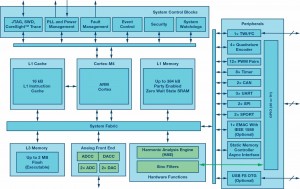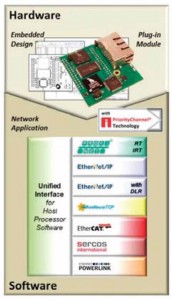There is currently a lot of discussion surrounding energy efficiency in modern production plants, and manufacturers of systems solutions are continually unveiling new concepts to address the issue. One concept includes introducing a greater degree of automation, which is somewhat surprising but it takes into consideration the demand for energy efficiency and improves it by providing a stronger, interconnected network.
Directives on energy efficiency are documented in European Union standards and set out in provisions such as those of the EuP (energy using products) directive. New regulations came into effect on January 1, 2015, with further measures planned for January 2017, when new energy efficiency classes will be introduced and smaller power units will be in scope. The goal is to reduce energy consumption further by 20% by the year 2020.
Electrical energy accounts for a considerable proportion of production costs, so it is hardly surprising that there is a drive to improve energy efficiency. Motors in production plants currently consume approximately 46% of the electrical energy produced and a motor’s energy consumption accounts for around 90% of total costs over its entire service life. Electric motors are the main power units behind almost all automation devices in our production plants and it is hard to imagine a future without them.
As a result, the focus of new developments is now to improve efficiency in an effort to reduce total costs. Furthermore, we are seeing a general industry trend toward greener, resource friendly, and networked production. Figure 1 depicts a block diagram of such a power unit.
New product developments are constantly improving system performance and quality. The permanent magnet synchronous motor (PMSM) is the new standard, replacing the brushless dc (BLDC) motor in many areas. The design of the synchronous reluctance motor (SynRM) has also become the subject of further investigation and research. The motor concept has been somewhat consigned to the history books since sufficient access to rare earths was available for magnets. Furthermore, the SynRM places high demands on the temperature range of the components used and requires new control concepts and PWM driver stages. Full digital control is key in the catalogue of requirements for all new systems since the specifications cannot be met without it.
Semiconductor manufacturers who produce the components used are being directly influenced by trends set by the systems manufacturers. They are calling for innovative developments in signal acquisition, signal conversion, and signal conditioning. Better prepared signals are fed to application specific processors, which drive faster servo loops with higher voltages. Higher voltages in the intermediate circuit require more voltage proof insulation devices and gate drivers for IGBTs.
In addition, new insulated interface modules, which offer greater stability in the long term, are required to protect the system and users from hazardous voltages—as is the case with hardware. Software is also being improved: new, faster algorithms push the more powerful processors to the max while a model-based design (MBD) approach allows systems to be parameterized, optimized, and tested prior to construction. It is clear that the energy efficiency of manufacturing automation systems is a complex, multidimensional problem.
The following are some key design challenges involved with optimizing energy efficiency:
X Firstly, increasing the system’s output and/or the number of units processed at the plant per hour. This requires new and more accurate algorithms, that deliver results in a faster computing time, reduce tool positioning time, and enable higher tool head speeds.
X Secondly, developing new components such as more integrated, powerful, and energy saving processors, in addition to new gate drivers, which can be deployed in current systems but are designed especially for new high voltage IGBTs using GaN or SiC technology.
X Thirdly, making the best possible use of energy in practice through energy saving measures in the entire inverter or servo drive, as well as reducing losses in standby mode, utilizing the power unit’s brake energy, and finally extensively networking the process modules within the production plant.
Analog Devices has new components that provide solutions for the previous challenges and make achieving optimal energy efficiency a reality:
X Powerful, yet efficient, processors (240 MHz clock rate) from the ADSP-CM40x family based on the ARM® Cortex®-M4F architecture, with large internal memories (2 MB flash, 384 kB SRAM) and flexible interfaces. The arithmetic unit with floating-point support is able to quickly and accurately process the model-based algorithms in the native data format. High precision, multichannel, 16-bit ADCs (14-bit ENOB) and fast sinc filters with programmable decimation rates for reconstructing Σ-Δ sampled currents, in conjunction with fast switching PWM units, increase the precision of the current servo loop. The sophisticated integration of the units reduces latency and computing times. The flexible memory integration and a unit for computing network harmonics (HAE–harmonic analysis engine) enable additional algorithms, especially for use in the active front end, returning energy from the dc bus into the local power grid. The appropriate interfaces guarantee easy integration into existing industrial networks. Figure 2 shows the block diagram of the ADSP-CM408F.
X The AD740x family of the insulated 16-bit Σ-Δ ADCs has been upgraded with more accurate components (14.2 ENOB) and an increased signal noise interval. They are specified across the entire frequency range and meet the increased insulation requirements of the sampled voltage up to 1250 V. High surge and ESD stability ensure that the component has a long service life. The clock can be generated internally (AD7402) or applied externally (AD7403). The Σ-Δ modulated signal obtained can be directly fed to the sinc filter in the ADSP-CM40x processor and does not require an FPGA for the reconstruction filter. There is also a component with differential output signals on LVDS lanes (AD7405), should the trace length be increased considerably.
X In addition, there are new insulated gate drivers, which are suitable both for existing MOSFET and IGBT technology, and have been specially developed for the new GaN and SiC power semiconductors.
X New product developments in the isolation space for simple digital interfaces, and more specifically for USB, CAN, RS-232, and LVDS, address the safety issue of interface insulation. These developments fulfill the stricter insulation requirements and are accordingly stable in the long term.
The new components make it possible to save energy locally. However, the individual inverter still contains one major loss factor: standby times without energy saving measures needlessly consume large amounts of energy. Greater and smarter integration of the manufacturing system would allow proper scheduling of operation times with high levels of activity. The corresponding energy saving mechanisms could therefore be activated at times when the power unit is not in use. Constant progress is being made in terms of networking the individual systems using industrial Ethernet, and this is replacing fieldbus systems with lower data rates. As such, it is

Figure 2. Block diagram of ADSP-CM40x architecture.
not only manufacturing data that is transferred via Ethernet; positioning data is also sent and the entire production line is synchronized.
The ADSP-CM40x processor is integrated into industrial Ethernet networks via Innovasic’s RapID module, which uses the fido5000 real-time Ethernet, multiprotocol (REM) switch, which supports the industrial Ethernet’s most widely used standards and protocols: POWERLINK, Modbus, EtherNet/ IP (DLR), PROFINET RT/IRT, SERCOS, and EtherCAT, each with growing requirements in terms of real-time capability and system synchronization. Figure 3 shows the module and the network protocols made available by Innovasic as stacks.

Figure 3. RapID module-based on the fido5000 REM Ethernet switch.
Through the improvements set out previously, ADI intends on promoting a sustainable concept for improving the energy efficiency of production plants and is implementing a vision, that places powerful components in a networked environment. Achieving the ambitious targets regarding precision and the sound integration of the new components will provide a breeding ground for innovation. Now it’s up to you to turn these ideas into new concepts for both individual parts and entire system solutions, as well as implement an even better approach using these components and modules.
About the Author Stefan Hacker is a motor control systems specialist in the Industrial and Instrumentation Segment at Analog Devices, Germany. He works with customers on the complete system signal chain for industrial motor control. Stefan holds a Dipl.-Ing. (FH) and M.Sc.-E.E. from the University of Applied Sciences Munich, Germany. He has more than 15 years of industry experience in system engineering roles to deliver differentiating system proposals to the whole customer base.







